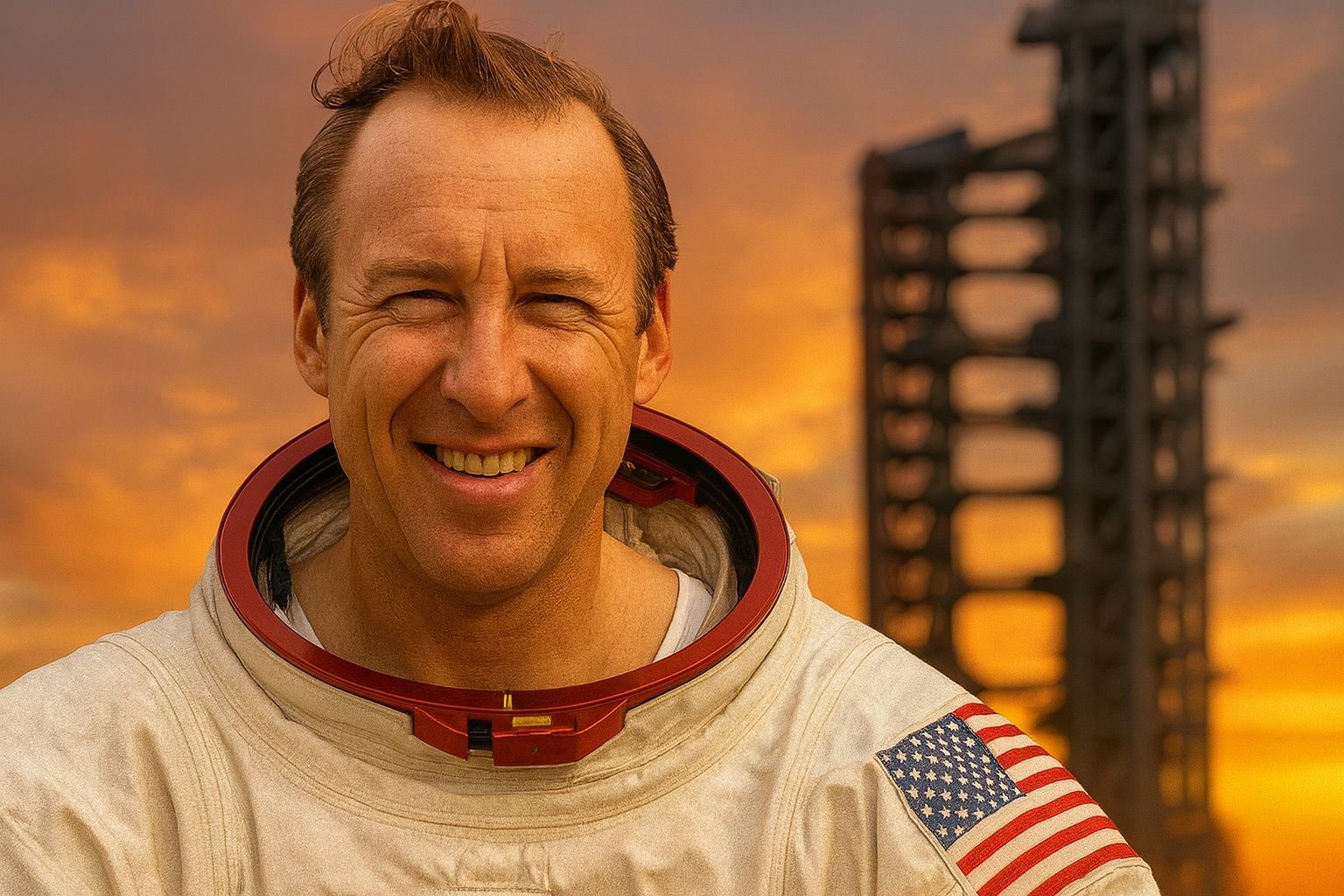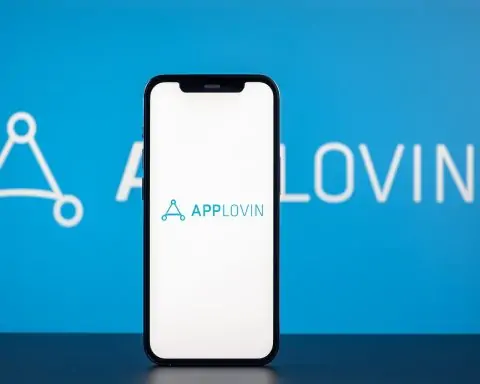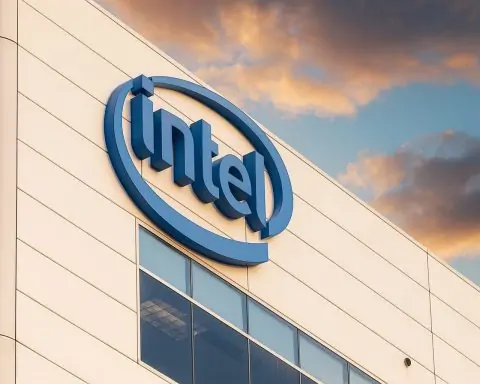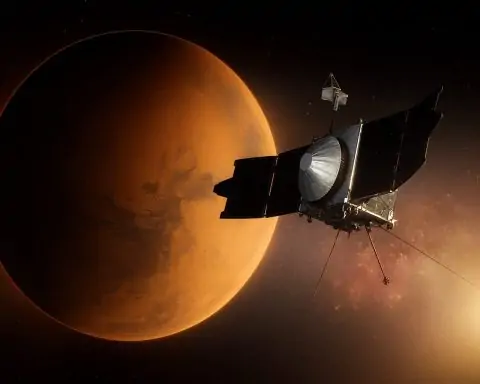- Apollo 13, commanded by Jim Lovell, launched from Kennedy Space Center on April 11, 1970 at 2:13 PM EST with Jack Swigert replacing Ken Mattingly 48 hours before launch due to measles exposure, suffered an oxygen-tank explosion on April 13, and splashed down in the Pacific near Samoa on April 17.
- Aquarius, the Lunar Module designed for two men for 2 days on the Moon, was pressed into service as a lifeboat for three astronauts for four days.
- Oxygen Tank 2 exploded and Tank 1 began leaking in the Service Module, knocking out two of Apollo 13’s three fuel cells and draining power.
- To return safely, the crew used Aquarius’s descent engine to achieve a free-return trajectory around the Moon, then conducted a second engine burn to speed their Earth return.
- A makeshift CO2 filter adapter using plastic bags, tape, and other onboard materials solved the mismatch between the LM’s round-hole CO2 canisters and the CM’s square cartridges.
- Jim Lovell, selected in NASA’s New Nine in September 1962, had flown Gemini 7 (Dec 1965), Gemini 12 (Nov 1966), and Apollo 8 (Dec 1968) before Apollo 13.
- NASA Flight Director Gene Kranz and Mission Control adopted the motto “Failure is not an option” to coordinate the improvised rescue.
- Apollo 13 spent 142 hours 54 minutes in space, most of it under extreme conditions, before a cold Odyssey was revived for reentry and splashdown.
- The 1995 film Apollo 13, starring Tom Hanks as Jim Lovell, earned nine Academy Award nominations and won two.
- In 1994 Jim Lovell co-authored Lost Moon: The Perilous Voyage of Apollo 13 with Jeffrey Kluger, expanding the saga beyond the mission itself.
In April 1970, Apollo 13 was poised to be NASA’s third Moon landing — until an explosion turned it into one of history’s most dramatic space rescues. At the center of this crisis was Jim Lovell, the mission’s commander, whose steady leadership helped transform imminent disaster into what he famously called a “successful failure.” Millions worldwide held their breath as Lovell and his crew fought to survive, a saga later immortalized in books and Hollywood film. Now, over half a century later, Lovell’s extraordinary life – from naval aviator to Apollo astronaut, to pop-culture icon – continues to inspire. (Jim Lovell passed away on August 7, 2025, at age 97, as reported by NASA and CNN [1].) This in-depth report explores Lovell’s biography, his career highlights and leadership at NASA, the Apollo 13 mission’s technical background and harrowing rescue, and the cultural legacy of a man and mission that captivated the world.
Early Life and Path to NASA
James “Jim” Lovell Jr. was born March 25, 1928, in Cleveland, Ohio [2]. Fascinated by rocketry as a boy, Lovell went on to attend the U.S. Naval Academy, graduating in 1952 with a Bachelor of Science [3] [4]. He served as a naval aviator and test pilot, logging thousands of hours in high-performance jets [5] [6]. In September 1962, Lovell was selected in NASA’s second group of astronauts (the “New Nine”), a cohort chosen to expand the fledgling U.S. human spaceflight program [7]. This set Lovell on a course that would see him become the first person to fly into space four times [8], helping to pave the way for America’s Moon landings.
Trailblazing Spaceflights: Gemini and Apollo
Lovell quickly built a résumé as one of NASA’s most experienced astronauts. Some of his career highlights include:
- Gemini 7 (December 1965) – Lovell served as pilot alongside Commander Frank Borman on this two-week endurance mission. Gemini 7 performed the first-ever rendezvous between two crewed spacecraft when it met Gemini 6A in orbit [9]. The flight set a record at the time for longest spaceflight, and Lovell’s stamina during 14 days in cramped quarters earned him admiration back home.
- Gemini 12 (November 1966) – Commanding the final Gemini mission, Lovell and pilot Buzz Aldrin carried out crucial spacewalk experiments. Their successful EVA techniques resolved previous difficulties with working outside the spacecraft [10], paving the way for Apollo’s lunar excursions. Gemini 12’s success closed out the Gemini program on a high note [11].
- Apollo 8 (December 1968) – As Command Module Pilot of Apollo 8, Lovell was part of the first crew to orbit the Moon. He and crewmates Frank Borman and Bill Anders became the first humans to witness the Moon’s far side and the famous “Earthrise” view of our planet [12]. In a live Christmas Eve broadcast from lunar orbit, Lovell and the Apollo 8 crew captivated millions by reading from the Book of Genesis, marking a poignant moment in the turbulent 1960s [13]. Apollo 8’s bold feat demonstrated that reaching the Moon was within reach, setting the stage for the Apollo 11 landing a few months later.
By the end of the 1960s, Jim Lovell was NASA’s most traveled astronaut. He had logged 715 hours in space over four missions, a record at that time [14] [15]. Lovell’s extensive experience and cool demeanor under pressure made him a natural choice to command another ambitious mission – Apollo 13.
Apollo 13: Mission Background and Ambitions
Apollo 13 was intended to be the third Moon landing of the Apollo program, with Lovell as spacecraft commander. NASA aimed to explore the Fra Mauro highlands on this mission, conducting geological surveys and deploying scientific instruments on the lunar surface [16]. Lovell’s crew included Fred W. Haise (Lunar Module pilot) and John “Jack” Swigert (Command Module pilot). Swigert was a last-minute substitute for Ken Mattingly, who was grounded 48 hours before launch due to measles exposure [17] [18]. Despite the unlucky number 13 and the crew reshuffle, Lovell was eager to fly. (Years later he quipped that as astronauts, “we were a people of science or superstition?” when asked about taking the #13 mission [19].)
Launch and “Routine” Journey: Apollo 13 lifted off from Kennedy Space Center on April 11, 1970 at 2:13 PM EST [20]. During launch, one of the Saturn V rocket’s second-stage engines shut down early, but the remaining engines burned longer to compensate, allowing Apollo 13 to reach orbit successfully [21]. Soon the spacecraft was on its way to the Moon after a Trans-Lunar Injection burn. In the first two days, the mission appeared to be going smoothly – so much so that CapCom Joe Kerwin joked from Houston, “the spacecraft is in good shape” and everyone in Mission Control was “bored to tears” [22]. The crew even broadcast a live TV tour of the spacecraft on April 13, though it went almost unnoticed by major networks at the time [23], as lunar missions had begun to seem routine to the public.
Little did anyone know that Apollo 13 was about to provide a dramatic reminder that spaceflight is anything but routine.
Crisis in Space: “Houston, We’ve Had a Problem”
The Explosion: On the evening of April 13, 1970, Apollo 13 was over 200,000 miles from Earth when Jack Swigert was asked to flip a switch to stir the cryogenic oxygen tanks – a standard procedure [24]. Moments later, the astronauts heard a loud “bang.” Lights flashed on the control panel. Swigert radioed the famous alarm, “Okay, Houston… we’ve had a problem here,” soon echoed by Lovell confirming, “Houston, we’ve had a problem” [25] [26]. Those calm words belied the situation – an oxygen tank in the Service Module had exploded, crippling the spacecraft.
Lovell peered out the window and saw oxygen venting into space from the stricken Service Module – “our lifeblood,” as he later described it [27] [28]. The crew rapidly realized that two of the three fuel cells (which combined oxygen and hydrogen to produce electricity and water) had failed [29]. Oxygen tank 2 was completely destroyed, and tank 1 was leaking; power was dwindling. “It really was not until I looked out the window and saw the oxygen escaping… that I knew we were in serious trouble,” Lovell recalled [30].
Mission Abort: With the spacecraft damaged, landing on the Moon was instantly out of the question. NASA’s focus shifted to a new goal: bring Lovell, Haise, and Swigert home alive. The crew and Mission Control faced a race against time to stabilize the situation. The Command Module “Odyssey” was losing power, so the decision was made to shut it down and preserve its batteries for reentry. The crew would have to move into the Lunar Module “Aquarius” and use it as a lifeboat – a scenario NASA had never anticipated before. In Mission Control, teams of engineers sprang into action, “[working] around the clock” to solve a string of life-threatening problems [31] [32].
“Failure Is Not an Option”: Saving Apollo 13
Under Lovell’s command, Apollo 13’s crew and their Houston support team embarked on an improvised rescue mission that would test every ounce of their ingenuity and courage. NASA Flight Director Gene Kranz and his team famously adopted the mindset that “failure is not an option,” rallying all resources to bring the astronauts home. Multiple challenges had to be overcome quickly:
- Lifeboat in Lunar Module: The Lunar Module Aquarius, designed for two men for 2 days on the Moon, now needed to shelter three men for four days in the vacuum of space. Lovell and Haise scrambled to power up Aquarius’s systems immediately after the explosion [33]. The LM’s descent engine was fired to adjust the return trajectory, putting Apollo 13 on a free-return course around the Moon – using lunar gravity to sling the spacecraft back toward Earth without a landing [34]. Later, a second engine burn was executed to speed the return and ensure a safe Pacific Ocean splashdown location [35]. Aquarius’s engine and full oxygen supply “proved critical in keeping the crew alive and returning them to Earth,” NASA noted [36].
- Power and Navigation: With Odyssey powered off and drifting in the cold, the crew faced extremely limited electricity and water in the Lunar Module. To conserve energy, they cut non-essential systems, even shutting off the cabin heater. Temperatures inside the spacecraft plummeted near freezing, and drinking water was rationed to just a few sips per day [37] [38]. Navigating home without the Command Module’s guidance computer also posed a challenge – at one point Lovell used a handheld sextant and even the Sun’s position to help align the spacecraft for critical engine burns [39]. Every procedure had to be rewritten on the fly. Normally it would take months to devise the complex power-up sequence for the command module, but now Mission Control had mere hours to improvise a plan for reviving Odyssey just before reentry [40]. (One worry: the cold CM was soaked in condensation; would turning it on short out the electronics? Fortunately, post-Apollo 1 safety improvements – better insulation on wiring – prevented any electrical arcing when power was finally restored [41].)
- Carbon Dioxide Buildup: A lesser-known but equally deadly threat was the rising CO₂ levels in the Lunar Module. The LM’s own carbon-dioxide scrubber canisters were quickly saturating with three men exhaling. Meanwhile, the Command Module had plenty of fresh CO₂ filters – but they were square cartridges, and the LM’s system used round holes. This mismatch prompted one of Apollo 13’s most famous engineering hacks: Mission Control told the crew how to “fit a square peg in a round hole” by jury-rigging an adapter using plastic bags, tape, and other onboard materials [42]. Amazingly, the contraption worked, and CO₂ levels dropped. Lovell later joked that the jury-rigged device “wasn’t very handsome, but it worked” – a testament to on-the-spot problem solving.
Throughout the crisis, Jim Lovell’s leadership was a calm center amid the storm. A former Navy captain, Lovell kept morale up and worked closely with Mission Control, methodically performing each improvised procedure. “His calm strength under pressure helped return the crew safely to Earth,” observed NASA’s leadership in tribute [43]. Fellow astronaut Mike Massimino later said Apollo 13 “showed teamwork, camaraderie and what NASA was really made of” in a life-or-death scenario [44]. For the crew, the disappointment of losing a Moon landing was very real – “my biggest emotion … was disappointment that we had lost the landing,” Lunar Module pilot Haise admitted [45] – but survival quickly became the only goal.
The Triumphant Return
After looping around the far side of the Moon on April 15, 1970, Apollo 13 was on course back to Earth. Lovell and his crew spent a total of 142 hours 54 minutes in space [46], most of it under extreme conditions. In the final hours of the voyage, they squeezed back into the cold, powered-down Command Module Odyssey and successfully resurrected it for reentry – a moment of enormous relief to engineers on the ground [47].
On April 17, 1970, Apollo 13 splashed down safely in the Pacific Ocean near Samoa, only about four miles from the recovery ship USS Iwo Jima [48]. As Navy divers and the recovery crew rushed to open the hatch, the world breathed a collective sigh of relief. President Richard Nixon phoned the astronauts on the aircraft carrier, telling them, “This is one of the great moments in American history.” The crew’s safe return was hailed as a stunning achievement of courage and ingenuity. What began as potential tragedy had turned into, as Lovell famously called it, a “successful failure” – the mission failed to reach the Moon, but succeeded in bringing the crew home alive [49].
NASA and the Apollo 13 team were widely honored for their heroism. The day after splashdown, President Nixon personally awarded the Presidential Medal of Freedom (the nation’s highest civilian honor) to Jim Lovell, Fred Haise, Jack Swigert and the Mission Control team in Houston [50]. In presenting the award, Nixon described the Apollo 13 saga as “NASA’s finest hour” [51]. Indeed, the mission’s outcome demonstrated the very best of NASA: creative problem-solving, grit, and refusal to quit in the face of overwhelming odds.
After Apollo 13: Leadership and Later Career
Apollo 13 was Jim Lovell’s final spaceflight. He had been slated to command Apollo 14, but fate had moved him up to the ill-fated 13th mission – and after surviving that ordeal, Lovell decided to hang up his space suit. In 1971, Captain Lovell became Deputy Director of the Johnson Space Center in Houston, taking on a leadership role to help manage NASA’s continuing missions [52]. He retired from both the Navy and NASA on March 1, 1973 [53], ending a distinguished 20-year military career and 11-year astronaut career.
Transitioning to the private sector, Lovell proved as adept in business as in space. He worked in executive roles at Bay-Houston Towing Company, then as president of Fisk Telephone Systems, and later as an executive vice president for Centel Corporation [54]. He finally retired from corporate life in 1991 [55].
Lovell remained a prominent public figure and advocate for exploration. In 1994, he co-authored “Lost Moon: The Perilous Voyage of Apollo 13” with journalist Jeffrey Kluger [56]. This best-selling memoir chronicled the Apollo 13 story from Lovell’s firsthand perspective, shedding new light on the crew’s experience. A year later, Lovell’s story reached an even wider audience when director Ron Howard’s film Apollo 13 (1995) hit theaters, with actor Tom Hanks portraying Lovell. The film, a critical and commercial hit, brought Apollo 13’s drama to life for a new generation. (Lovell himself makes a cameo appearance near the film’s end – he appears as the captain of the USS Iwo Jima recovery ship, wearing his actual Navy captain’s uniform to lend authenticity [57] [58].) The movie’s famous line “Houston, we have a problem” became one of the most quoted phrases in cinema – even though, as historians note, the real quote was “Houston, we’ve had a problem” [59]. Lovell has good-naturedly noted the minor Hollywood tweak, appreciative that the film otherwise stayed very true to actual events [60] [61].
Throughout the 1990s and beyond, Lovell embraced his role as an ambassador for space. He gave lectures and speeches around the world, sharing lessons on leadership and teamwork drawn from Apollo 13. In 1995, he was awarded the Congressional Space Medal of Honor by President Bill Clinton for his exceptional service as an astronaut [62]. Lovell also entered the U.S. Astronaut Hall of Fame (1993) and the National Aviation Hall of Fame (1998) [63] [64]. Back in his hometown area of Chicago, he opened a family-friendly restaurant called “Lovell’s of Lake Forest,” featuring Apollo memorabilia (including a space capsule mural) as part of the décor [65]. By the 2010s, a Veterans Affairs medical center in Illinois was even named the Captain James A. Lovell Federal Health Care Center, honoring his legacy of service [66].
Lovell’s post-NASA life was full and fulfilling, but he never strayed far from the space community. As late as 2018, at age 90, he was still being honored with lifetime achievement awards and appearing at Apollo anniversary events [67]. He remained an optimist about space exploration. “Jim Lovell embodied the bold resolve and optimism of both past and future explorers,” said a NASA tribute [68].
The Legacy of Apollo 13 and Lovell’s Leadership
The Apollo 13 mission has gone down in history as far more than just an aborted moon flight. It is often cited as the ultimate case study in crisis management. Business schools and leadership seminars teach Apollo 13 as an example of teamwork, creative thinking, and grace under pressure [69]. Former astronaut Mike Massimino summarized its impact: “Apollo 13 showed the public and NASA itself what teamwork and ingenuity can accomplish” in dire circumstances [70]. The phrase “successful failure” – first coined by Lovell to describe Apollo 13’s outcome – has entered the lexicon to mean snatching success from the jaws of failure [71]. In NASA’s own analysis, the lessons learned from Apollo 13 “were rapidly applied to the remaining Apollo missions and continue to guide safety and mission assurance at NASA today” [72]. For example, the fuel tank explosion led to redesigns in spacecraft systems, and the mission’s review prompted greater rigor in risk management for future programs [73] [74].
Historically, Apollo 13 now stands shoulder-to-shoulder with Apollo 11 (the first Moon landing) and Apollo 8 (the first Moon orbit) as one of the defining moments of the Apollo era [75]. It may seem ironic – the missions that actually landed on the Moon (Apollos 14–17) are sometimes just footnotes in popular memory compared to the drama of 13 [76]. But as Time magazine quipped, Apollo 13’s story “is enshrined alongside Apollos 8 and 11 as part of the great triptych of American space exploration” [77]. The mission’s gripping narrative – three astronauts in mortal peril, a nation holding its breath, and an against-all-odds safe return – has transcended its era. It reminds us that exploring the unknown often carries great risk, but also that ingenuity and courage can triumph even when things go very, very wrong.
For Jim Lovell, Apollo 13 cemented his legacy as a legendary astronaut and leader. Lovell never did get to walk on the Moon. Yet he’s expressed a kind of fateful gratitude for how things turned out. “Imagine if I’d landed,” Lovell mused decades later. “I’d have said a few words nobody would remember and that would be that… A lot has happened as a result of that successful failure” [78]. Indeed, Lovell’s name became synonymous with perseverance under pressure. His calm voice saying “Houston, we’ve had a problem” has echoed through history as a model of measured urgency. “We did not lose anybody,” Lovell once reflected. “The mission was a failure in its initial goal, but it was a tremendous success in the ability of people to get together… to turn almost certain catastrophe into a successful recovery” [79] [80].
Lovell’s leadership style – composed, collaborative, and unflappable – influenced NASA long after Apollo. Flight director Glynn Lunney, one of the key figures in Mission Control during Apollo 13, praised Lovell’s temperament: “There was no panic. Jim was as cool as they come. That mattered a lot for bringing them home.” Such testimonies have built Lovell’s reputation as one of the great commanders in spaceflight history. In the pantheon of American astronauts, Lovell is often mentioned alongside Neil Armstrong, John Glenn, and other pioneers [81]. As the Time journalist (and Lovell’s co-author) Jeffrey Kluger observed, Tom Hanks’s portrayal in Apollo 13 and Lovell’s own decades of public speaking “secured him a spot on the Rushmore of astronauts” [82].
Cultural Impact and Popular Portrayals
Apollo 13’s near-disaster and rescue captured the public imagination like few other events. The mission unfolded live on television in 1970, keeping tens of millions glued to news coverage. Its cultural legacy only grew with time. The 1995 film “Apollo 13” introduced new generations to the story, earning nine Academy Award nominations (winning two) and popularizing phrases like “Failure is not an option!” (a line delivered by actor Ed Harris as Gene Kranz). Tom Hanks’s portrayal of Jim Lovell was widely praised for its humanity and authenticity, and the real Lovell had a memorable cameo handshake with his on-screen self at the film’s end [83]. To this day, Apollo 13 is regarded as one of the most realistic space films ever made, in part due to Lovell’s involvement and Ron Howard’s commitment to accuracy [84] [85].
Beyond the blockbuster film, Apollo 13 has been featured in documentaries (such as “Apollo 13: To the Edge and Back” on PBS) and in Tom Hanks’s HBO miniseries “From the Earth to the Moon”. The mission’s events have inspired countless books, articles, and even an immersive Apollo 13 simulation exhibit at NASA visitor centers. The radio call “Houston, we have a problem” has entered pop culture as shorthand for any sudden trouble, recognizable even to those who don’t know its space history. In 2010, on the mission’s 40th anniversary, NASA’s John Shannon quipped that if Apollo 13 happened in the Twitter age, “#Apollo13” would have trended worldwide for days. The story’s enduring appeal lies in its dramatic tension and uplifting resolution – proof that sometimes real life is the best thriller.
Jim Lovell’s own memoir Lost Moon (re-released as Apollo 13 after the film) remains a gripping firsthand account. His co-author Jeffrey Kluger and others have noted that Apollo 13 seems to resonate because it showcased human ingenuity at its best. As the Planetary Society summed up, the “so-called ‘successful failure’ of Apollo 13 engaged worldwide interest, demonstrated the capability of the crew and mission support teams, and came to represent a defining moment in NASA history” [86]. It’s a tale of real heroes with slide rules and duct tape, not capes – a point of pride for NASA and all who value problem-solving and teamwork.
Final Years and Recent News
In his later years, Jim Lovell enjoyed a quiet life in Illinois with his wife Marilyn (his high school sweetheart, whom he married in 1952) [87] [88]. They raised four children and remained married for 70 years until Marilyn’s passing in 2023 [89]. Even in his 90s, Lovell continued to attend astronaut reunions and Apollo commemorations, his signature smile and gracious manner always present. Admirers describe him as humble about his achievements and generous with his time – a true gentleman explorer.
On August 7, 2025, Jim Lovell passed away at age 97 in Lake Forest, Illinois [90]. His death was met with an outpouring of tributes from around the world. NASA’s Acting Administrator at the time, Sean Duffy, hailed Lovell as “a famed Apollo astronaut…whose life and work inspired millions” [91]. “Jim’s character and steadfast courage helped our nation reach the Moon,” Duffy noted, “and turned a potential tragedy into a success from which we learned an enormous amount” [92]. Fellow Apollo astronaut Buzz Aldrin tweeted that Lovell had “exemplified the spirit of exploration,” and actor Tom Hanks wrote simply, “We salute you, Captain Jim Lovell. You made us believe in miracles.”
CNN’s obituary headline remembered him as the “Apollo 13 astronaut Jim Lovell, dead at 97”, emphasizing his role in the harrowing mission that defined his legacy [93]. In a statement, NASA stated that it “will remember him always” and highlighted how Lovell’s calm bravery during Apollo 13 continues to set the standard for astronauts and mission controllers [94]. The Navy, too, honored Lovell – a Naval Academy graduate and retired captain – for his lifetime of service and heroism [95].
Though Jim Lovell has departed Earth one final time, his story lives on indelibly. Every time Apollo 13 is taught in classrooms or mentioned as a cultural reference, Lovell’s name comes up as a symbol of leadership under pressure. He embodied the best of the Apollo era – the boldness to voyage beyond Earth, and the wisdom to bring crew home safely when things fell apart. As NASA gears up to return to the Moon in the coming Artemis program, it carries forward the hard-won lessons of Apollo 13. In that way, Jim Lovell’s legacy is not just a chapter in history books; it’s a living influence on the future of exploration.
Conclusion
Jim Lovell once said, “There are people who make things happen, there are people who watch things happen, and there are people who wonder what happened.” Throughout his life, Lovell was decidedly one who made things happen – from piloting groundbreaking missions to calmly solving life-or-death problems 200,000 miles from Earth. His career, culminating in Apollo 13, showcases the ingenuity and courage that turned a doomed mission into an inspiring triumph.
Lovell’s life story – Naval aviator, Gemini and Apollo veteran, Apollo 13 commander, author, entrepreneur, beloved husband and father, and American hero – reads like an epic adventure. It reminds us that exploring space will always carry risks, but as long as there are explorers like Jim Lovell, even the worst “problem” can lead to humanity’s finest hours. As we remember his passing in 2025, we celebrate a legacy written in the stars: a testament to leadership, perseverance, and the power of teamwork when it matters most.
Sources:
- NASA – Acting Administrator’s Statement on Jim Lovell’s Legacy [96] [97]
- NASA – Apollo 13 Mission Overview: “The Successful Failure” [98] [99] [100] [101]
- CNN (Jackie Wattles) – “Apollo 13 astronaut Jim Lovell dead at 97” [102]
- CNN Editorial Research – “James Lovell Fast Facts” (Biography & Timeline) [103] [104] [105]
- Time (Jeffrey Kluger) – “Astronaut Jim Lovell Has Made Peace With the ‘Successful Failure’” [106] [107] [108]
- Biography.com – “Apollo 13: The Real-Life Astronauts Portrayed in the Movie” [109] [110] [111]
- The Planetary Society – “Apollo 13: A Successful Failure” [112] [113]
- NASA – 50th Anniversary of Apollo 13 News Release [114] [115]
- NASA – Jim Lovell Official Biography & Mission Logs [116] [117]
- NASA – Apollo 13 Mission Transcript/History [118] [119]
References
1. krdo.com, 2. www.erienewsnow.com, 3. www.nasa.gov, 4. www.erienewsnow.com, 5. www.nasa.gov, 6. www.nasa.gov, 7. www.erienewsnow.com, 8. www.erienewsnow.com, 9. www.erienewsnow.com, 10. www.erienewsnow.com, 11. www.nasa.gov, 12. time.com, 13. www.erienewsnow.com, 14. www.nasa.gov, 15. www.erienewsnow.com, 16. www.planetary.org, 17. www.nasa.gov, 18. www.planetary.org, 19. time.com, 20. www.nasa.gov, 21. www.nasa.gov, 22. www.nasa.gov, 23. www.planetary.org, 24. www.planetary.org, 25. www.planetary.org, 26. www.biography.com, 27. www.nasa.gov, 28. www.biography.com, 29. www.nasa.gov, 30. www.biography.com, 31. www.nasa.gov, 32. www.nasa.gov, 33. www.planetary.org, 34. www.planetary.org, 35. www.planetary.org, 36. www.nasa.gov, 37. www.nasa.gov, 38. www.nasa.gov, 39. www.nasa.gov, 40. www.nasa.gov, 41. www.nasa.gov, 42. www.nasa.gov, 43. www.nasa.gov, 44. en.wikipedia.org, 45. www.biography.com, 46. www.biography.com, 47. www.nasa.gov, 48. www.biography.com, 49. time.com, 50. www.biography.com, 51. www.biography.com, 52. www.erienewsnow.com, 53. www.erienewsnow.com, 54. www.erienewsnow.com, 55. www.erienewsnow.com, 56. www.erienewsnow.com, 57. www.facebook.com, 58. www.biography.com, 59. www.biography.com, 60. www.biography.com, 61. www.biography.com, 62. www.erienewsnow.com, 63. www.erienewsnow.com, 64. www.erienewsnow.com, 65. www.erienewsnow.com, 66. www.erienewsnow.com, 67. www.erienewsnow.com, 68. www.nasa.gov, 69. time.com, 70. en.wikipedia.org, 71. time.com, 72. www.nasa.gov, 73. www.nasa.gov, 74. www.nasa.gov, 75. time.com, 76. time.com, 77. time.com, 78. time.com, 79. www.biography.com, 80. www.biography.com, 81. time.com, 82. time.com, 83. www.facebook.com, 84. www.biography.com, 85. www.biography.com, 86. www.planetary.org, 87. www.nasa.gov, 88. www.erienewsnow.com, 89. www.erienewsnow.com, 90. krdo.com, 91. www.nasa.gov, 92. www.nasa.gov, 93. krdo.com, 94. www.nasa.gov, 95. www.nasa.gov, 96. www.nasa.gov, 97. www.nasa.gov, 98. www.nasa.gov, 99. www.nasa.gov, 100. www.nasa.gov, 101. www.nasa.gov, 102. krdo.com, 103. www.erienewsnow.com, 104. www.erienewsnow.com, 105. www.erienewsnow.com, 106. time.com, 107. time.com, 108. time.com, 109. www.biography.com, 110. www.biography.com, 111. www.biography.com, 112. www.planetary.org, 113. www.planetary.org, 114. www.nasa.gov, 115. www.nasa.gov, 116. www.nasa.gov, 117. www.nasa.gov, 118. www.erienewsnow.com, 119. www.planetary.org










